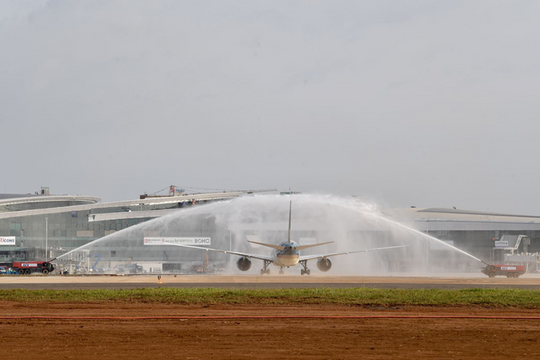
Geopolitical Challenges and Supply Chain Disruptions
In the early years of this decade, global supply chains encountered a multitude of emerging challenges stemming from trade wars, the COVID-19 pandemic, political tensions, and climate change. These factors have greatly increased the complexity and stress levels within global supply chains. According to recent data, the Geopolitical Risk with Trade (GPRT) index from 2020 to 2024 surged approximately 30% compared to the previous two decades, indicating heightened volatility in trade relations. Meanwhile, the Global Supply Chain Pressure Index (GSCPI) nearly tripled, underscoring the unprecedented strain on supply chains worldwide.
These fluctuations are not isolated incidents but systemic challenges that reveal a critical reality: today’s supply chains must do more than just respond quickly to disruptions - they must build enduring resilience, or “anti-fragility,” an ability to not only withstand adversity but to grow stronger from it. These pressures are accelerating the need for innovation and strategic foresight in supply chain management, driving organizations to enhance their capabilities to maintain a competitive edge.
Seven Key Risks in Modern Supply Chains
Under these intensifying pressures, seven primary risks have surfaced, demanding immediate focus and action plans from supply chain leaders:
- Tariff Changes and Regulatory Requirements: Trade tensions and rapid policy shifts can drive up costs and disrupt supply chain operations. A deep understanding of trade regulations and timely response plans are essential to avoid significant losses.
- Trade Route Blockages: Events such as the Suez Canal blockage highlight heavy reliance on key trade routes. This emphasizes the need for contingency strategies and diversified logistics to reduce risk exposure.
- Constraints on Critical Materials: Supply chains are facing difficulties in accessing essential raw materials, impacting numerous industries. Diversifying suppliers and investing in alternative materials are effective ways to tackle these shortages.
- Increase in Cyberattacks: As supply chains become more digitized, they are increasingly vulnerable to cyber threats, which can harm data integrity and brand reputation. Ensuring cybersecurity is a top priority in today’s landscape.
- Energy Security and Sustainability Transitions: Sustainability trends place dual pressure on supply chains—to ensure a reliable energy supply while adopting green alternatives. This directly impacts costs and production decisions.
- Labor Disruptions: Difficulty in recruiting skilled technical labor, wage inflation, and workforce structural shifts are hampering global supply chain operations.
- Currency Volatility and Financial Risk: Geopolitical tensions are increasing financial instability, affecting supply chain costs and the profitability of investments.
Building Competitive Readiness
In this context, organizational readiness is a crucial asset for supply chains, enhancing resilience and adaptability. Supply Chain Officers (SCOs) and CEOs must establish specific strategies to address each of the above challenges through core questions of optimization and risk management:
- Optimizing the Operating Model: How can the operating model be improved, balancing centralization and decentralization on a global scale, to ensure both efficiency and flexibility?
- Decision-Making Clarity: Are decision-making factors and contingency plans clearly defined for routine operations as well as disruptions?
- Building a Digital Workflow: Is the workflow supported by the best available data and designed with clear decision-making authority?
When these questions are regularly reviewed and addressed, supply chains become more agile, better equipped to navigate complex disruptions in the future. Key steps such as optimizing working capital, building a diversified supplier network, and conducting regular stress tests are crucial for strengthening competitiveness.

A Vision for Sustainable Supply Chains
As supply chains continue to face ongoing volatility, leaders must reimagine supply chains as adaptable, sustainable, and resilient ecosystems. Recent indices and data show that disruptions will not merely be temporary but will have a prolonged impact on global supply chains. Therefore, building robust organizational capabilities is central to enabling supply chains not only to survive but to thrive and excel in navigating complex challenges.
By investing in technology, upskilling the workforce, and proactively adapting to changes, supply chain leaders can establish a competitive advantage in an increasingly uncertain world. Rather than relying on reactive measures, they need a comprehensive strategic vision to ensure that the supply chain evolves from a mere support function into a core asset that drives organizational success in any geopolitical context.





.jpg)

.jpg)

.png)

.png)
.png)



.png)




